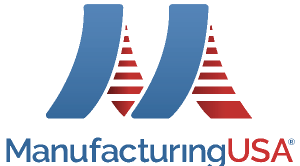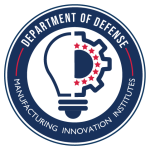


Strategic roadmap to determine how additive manufacturing can impact the DoD casting and forging supply base
Problem
With a 67% reduction in the number of U.S. foundries since 2000, the U.S. Department of Defense (DoD) is facing challenges with the supply of domestically produced castings and forgings. Many of the parts required by the DoD are high mix/low volume parts, but today’s domestic casting and forging industries prefer high-value, high quantities, such as those found in the automotive and heavy machinery and equipment industries. In addition to capability and capacity constraints, government policies and workforce challenges severely limit the ability of small and medium enterprises, such as those found in the casting and forging industries, to supply the DoD.
Objective
The purpose of the project was to convene the U.S. additive manufacturing (AM) ecosystem, along with the domestic casting and forging ecosystem to determine opportunities for AM to augment or replace traditional foundry processes. Previous projects were limited to the exploration of advanced castings concepts, resulting in direct printing replacements or tooling demonstrators. A more strategic assessment was used to define and clarify the challenges and determine the opportunities for AM to complement the DoD casting and forging supply base.
Technical Approach
The project team deployed a three-phase process to generate a strategic roadmap that would enable the utilization of AM technologies in the DoD casting and forging supply base. The approach was grounded in strategy methodologies that allowed all stakeholders to understand the challenges of utilizing AM technologies to augment casting and forging supply chain processes. The first phase focused on discovery by identifying the current state while defining a vision for the future state, followed by conducting a prioritized gap assessment between the two. The second phase involved functional analysis of the gaps to identify and prioritize plans to close the gaps. The findings fed a project call that awarded eight projects that began to address the identified gaps. Finally, the third phase was the synthesis of the results which validated the roadmap with critical stakeholders to document the impact of the identified projects and assure execution in the future.
Accomplishments
The project effort resulted in the creation of an Additive Manufacturing Technology Roadmap that provides valuable insight into how current AM capabilities and defined research and development goals will address the immediate needs of the casting and forging ecosystems.
The Discovery Phase, composed of academic literature reviews and interviews with subject matter experts, provided critical insight into where and how potential AM solutions could be deployed to realize a meaningful impact on production. The findings from this phase provided the initial input to the Visioning Workshop.
The Visioning Workshop held in March 2023 convened 95 attendees representing 75 organizations across industry and government. This group translated initial findings from the discovery phase into a total of 54 structured goal statements which set the direction for the projects identified in the final roadmap.
The Functional Analysis Workshops held in May 2023 convened 86 attendees representing 60 different organizations. The workshop was structured to expand the project definitions and activities sourced from the Visioning Workshop into detailed and prioritized execution plans. Each of the resulting plans outlined the schedule for implementation, overall cost, key metrics, and deliverables for the 21 projects defined in the resulting roadmap. In addition, the summarized findings from this workshop were used to supplement information to define topic areas that fed the IMPACT project call announced in late May 2023. Eight projects were awarded under the project call in July 2023 kick-starting activity to address the immediate needs of the casting and forging industry.
The Validation Workshop was held in a virtual format in July 2023 with a focused group of 10 stakeholders representing a broad set of government and DoD perspectives. The group played a crucial role in finalizing the roadmap, ensuring unanimous agreement on roadmap structure and organization. A thorough review of the 21 projects, allowed the group to refine project objectives, identify gaps, and recognize synergies across the defined projects. The collective effort resulted in a roadmap that serves as a strategic guide for positioning and delivering future development and funding to allow AM technologies to enhance the casting and forging industries and provide an agile, resilient supply chain to the DoD.
Project Participants
Project Principal

Other Project Participants
- America Makes/NCDMM
- Forging Industry Association (FIA)
- Steel Founders' Society of America (SFSA)
- American Foundry Society (AFS)
- North American Die Casting Association (NADCA)
- Investment Casting Institute (ICI)
Public Participants
- U.S. Department of Defense
